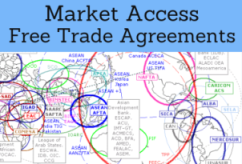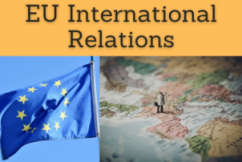EU Eastern Partnership (European Union)

EU, Armenia, Azerbaijan, Belarus, Georgia (Eastern Partnership)
- Introduction to the Eastern Partnership of the EU (European Foreign Policy)
- Association Agreements and Deep and Comprehensive Free-Trade Areas (DCFTA) of the EU with Armenia, Azerbaijan, Belarus, Georgia, Moldova and Ukraine
- Trade relations between the EU and the Eastern Partnership countries
The objectives of the subject “Eastern Partnership (EU)” are the following:
- To know the fundamentals of the EU Eastern Partnership with Armenia, Azerbaijan, Belarus, Georgia, Moldova and Ukraine
- To analyze the EU's Trade Relations, Association Agreements and Deep and Comprehensive Free-Trade Areas with these countries


The Subject “EU Eastern Partnership (EU)” belongs to the following Online Programs taught by EENI Global Business School:
Doctorate: European Business, World Trade.
Masters: International Business, Foreign Trade.
Languages:  or
or  Asociación Oriental UE
Asociación Oriental UE  Partenariat oriental de l’UE
Partenariat oriental de l’UE  Parceria Oriental da UE.
Parceria Oriental da UE.
Masters adapted for  EU Students.
EU Students.
Masters adapted to the Students from
 Armenia,
Armenia,
 Azerbaijan,
Azerbaijan,
 Belarus,
Belarus,
 Georgia,
Georgia,
 Moldova, and
Moldova, and
 Ukraine
Ukraine


Sample - EU Eastern Partnership:

The Eastern Partnership of the EU was created in 2009 with the aim of strengthening the economic and political relations between the EU member states and six countries of the South Caucasus and Eastern Europe, as well as promoting the economic integration.
- The South Caucasus countries are Armenia, Azerbaijan and Georgia
- The Eastern European countries are Belarus, the Republic of Moldova and Ukraine
The EU has Association Agreements and Deep and Comprehensive Free Trade Areas (DCFTA) with Armenia, Azerbaijan, Belarus, Georgia, Moldova and Ukraine.
The Eastern Partnership and the Euro-Mediterranean Partnership are the pillars of the European Neighborhood Policy (EU).
Notes:
- Russia is not part of the Eastern Partnership as it has a strategic partnership agreement with the EU
- Turkey is not part of the Eastern Partnership, as it is a country in the process of joining the EU

(c) EENI Global Business School (1995-2024)
We do not use cookies
Top of this page



